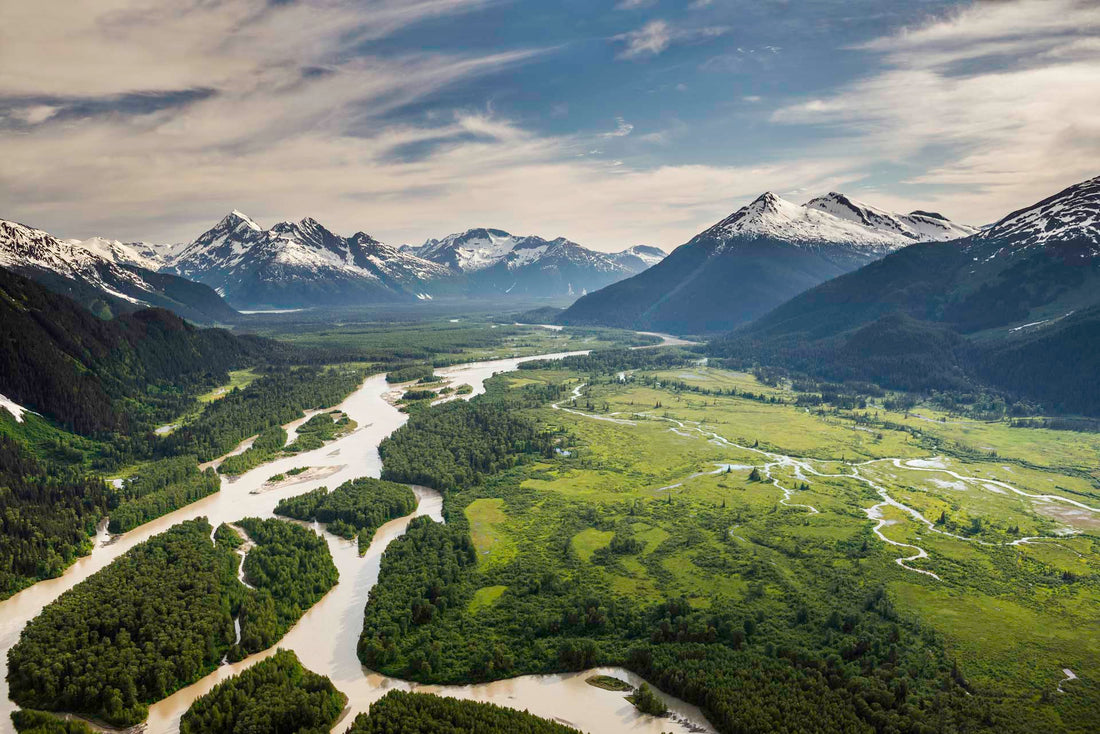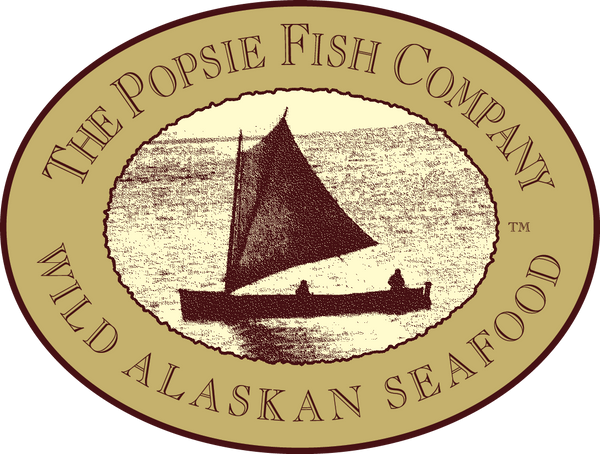
You help keep Alaska salmon thriving
View of the Tulsequah: The Tulsequah River, a tributary to the Taku River, which flows from British Columbia, Canada into Southeast Alaska. A transboundary river, the Taku is one of Southeast Alaska's most important wild salmon producers. It's also threatened by a poorly regulated gold mining boom just over the border, in Canada. (Photo by Chris Miller)
Each summer, Alaska’s wild salmon return from the ocean to the streams, rivers and lakes where they were born, a pulse of life that ripples out across the land. Brown and black bears move from creek to creek, following the salmon. They carry their catch off into the trees. Eagles and ravens gather around, picking at the scraps. What isn’t eaten dissolves into the earth. In southeast Alaska, in the Tongass National Forest, salmon help the trees grow taller and stronger. They’re intertwined with, and nourish, almost every part of our landscape.

Alaskans have been catching and eating wild salmon for thousands of years. We catch them in gillnets. We catch them in seine nets. We troll for them from boats. We fish for them with a line and a hook from the shore. We catch them in fish wheels hundreds of river miles from the ocean. We filet them, smoke them, bake them, fry them, and barbecue them. And Alaska’s fishing fleet shares the bounty with you — wild salmon consumers across the United States. At SalmonState, we’re grateful for that, because it sounds strange, but it’s true: by choosing to buy and eat wild Alaska salmon, you’re helping to keep Alaska’s wild salmon runs healthy.
The reason is this: from Bristol Bay in Southcentral Alaska, to the creeks that flow beneath the towering 800-year-old spruce and hemlock trees of Southeast Alaska’s Tongass National Forest, Alaska is home to some of the last thriving wild salmon runs on the planet. The people who fish for Alaska’s wild salmon live, value, and work to defend a way of life wild salmon make possible. Salmon are incredibly resilient, but it’s clear that without healthy habitat their numbers decline. When you choose to purchase wild salmon from responsible fishermen like the Popsie Fish Company, you’re also saying that you value a world in which wild salmon continue to thrive — and that the habitat that makes wild salmon possible is important.

While we’re home to some of the last remaining healthy wild salmon runs in the world, however, Alaska is not immune to the threats that destroyed salmon runs in the Lower 48. That’s why, at SalmonState, we work to defend wild salmon habitat, to fight for science-based policies and careful management, and to amplify the voices of people deeply connected to our wild salmon.
In Bristol Bay, Alaska, a vast watershed home to more than half the planet’s sockeye salmon catch, that has meant fighting the proposed Pebble Mine: a massive gold, copper and molybdenum mine (and toxic waste site) proposed for the seismically-active headwaters of Bristol Bay’s river systems. In the Tongass, it has meant working for an end to old growth clearcuts in the 17 million acre forest — the largest national forest in the United States, and the largest temperate rainforest in the world, where 25% of the West Coast’s commercial salmon catch come from. It has also meant working for protections for the Taku, Stikine and Unuk, wild salmon rivers that flow from British Columbia, Canada into the United States — and which are currently threatened by a massive influx of poorly regulated open pit gold mines and associated accident-prone earthen waste dams in BC.

Acid mine drainage: Acid mine drainage from British Columbia's abandoned Tulsequah Chief Mine has been leaching into the Tulsequah River, a tributary of the transboundary Taku River, for more than 60 years. The Tulsequah Chief is a fraction of the size of some of the mines planned for just over the Alaska border. British Columbia may have a reputation as green, but it is a bad neighbor to its downstream states — Alaska, Montana, Idaho and Washington. Its poorly regulated mines pollute water and kill fish and endanger wild salmon runs and ways of life. Alaskan fishermen, Tribes, communities and organizations are working hard to bring attention to this international issue. (Photo by Chris Miller)
Up here in Alaska, people call wild salmon a lot of things: gifts. Resources. Family members. One thing they always are: essential.
That’s why it’s essential we work together to keep Alaska a place that wild salmon return to for generations to come. Your choices, whether it is eating wild salmon, donating to our work or both, make a difference.
If you’re moved to donate this Giving Tuesday, you can do so at https://salmonstate.org/donate
By: Salmonstate
